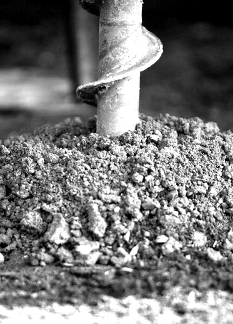Groundwater checks go passive
 Engineers have come up with a low-cost, passive method for groundwater exploration.
Engineers have come up with a low-cost, passive method for groundwater exploration.
A research team from UNSW Sydney, Karlsruhe Institute of Technology (KIT) and Deakin University developed a new way of investigating groundwater resources by analysing the groundwater level changes due to influences by Earth and atmospheric tides.
These effects can be measured in monitoring boreholes around the world.
Current testing methods require active pumping of water from a specially designed water-extraction well while observing the water level response in other wells in the vicinity.
“This costs a lot of money and only gives a result for that particular location,” says engineering geologist Dr Gabriel Rau.
“The properties of groundwater reservoirs – also known as aquifers – vary greatly in space, and it is much too expensive and intrusive to build extraction wells everywhere.
“The new method, on the other hand, involves using tidal information embedded in water levels from monitoring boreholes. It is a passive technique and simpler to conduct than the current practices of pump and aquifer testing.”
But this may be about to change, with a previously underutilised groundwater investigation method.
“This method has the advantage of being able to calculate the physical properties of the subsurface from just the measured water levels,” says UNSW researcher Timothy McMillan.
Normally, to calculate available groundwater, a large hole needs to be drilled which then requires a crew of two to three people managing the drill rig to pump water out, lasting anywhere from a few days to several months.
The passive approach requires only a small hole to be drilled, then an automated water pressure data logger to be placed in the hole for a month, which produces the same results.
“An added advantage of our new approach lies in the fact that we can re-analyse decades of existing water level data to calculate subsurface properties that change over time,” Mr McMillan said.
“Whereas the pumping method would require the pumping crew to come back and pump the hole again for the same length of time they previously did to get one more value.”
Dr Rau describes the passive method as “paradigm shifting” in subsurface resources research.
“We can use the impact of Earth and atmospheric tides on commonly acquired atmospheric and groundwater pressure to obtain unprecedented knowledge of subsurface properties at low cost,” he says.
“Similar to tides in the ocean, the groundwater level is affected by tidal forces squeezing the porous rocks in the subsurface and causing measurable pressure changes.”
The engineers say that using a combination of knowledge gained from engineering, science and maths, the impact of Earth and atmospheric tides on groundwater can be used to make calculations to forecast groundwater resources linked to climate variability.
“Our new approach lets us use existing data to get to the same properties [as active exploration],” Dr Rau says.
“And because we can also use the cheaper monitoring boreholes, we get many more locations in space. Also, we can now monitor changes in properties over time.”








 Print
Print